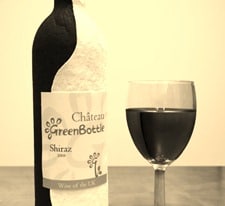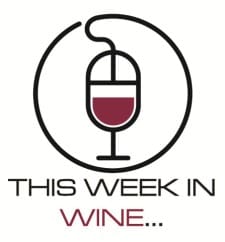Georgia Allowed to Start Selling Alcohol on Sundays.
 Early poll results had voters in most of the 51 metro Atlanta jurisdictions giving a resounding yes to continuing the slow dissolution of a blue law dating to the late 1800s, one of the last restraints on Sunday consumption.
Early poll results had voters in most of the 51 metro Atlanta jurisdictions giving a resounding yes to continuing the slow dissolution of a blue law dating to the late 1800s, one of the last restraints on Sunday consumption.
But at least two cities have said no — Palmetto in south Fulton and Clayton County’s Forest Park.
"That’s the Lord’s day, in my opinion," said Corine Deyton, a Sunday school teacher whose son is a Baptist music minister. "If you can’t do without alcohol one day a week, there’s something bad wrong with you."
But, for the most part, voters in metro Atlanta sided against Deyton.
“The results of today’s election,” Georgia Food Industry Association lobbyist Kathy Kuzava said, “have shown that the vast majority of voters overwhelmingly support the opportunity to purchase all of their groceries, including beer and wine, seven days per week.”
Click here for the full article.
My Thoughts
About bloody time! I certainly don’t think it’s a sin to buy alcohol on Sunday; it’s what you do after you’ve bought it where the problems start occurring!
In my opinion, more emphasis needs to be placed on responsible drinking, rather than limiting when people can purchase, if people really want to stay in “Gods good graces”.
Study Looks at What Motivates Wine Shoppers
 According to a recent study of wine retailers, most consumers are buying wine in the $10-$20 price range. But when given the opportunity to try before they buy, consumers will spend more.
According to a recent study of wine retailers, most consumers are buying wine in the $10-$20 price range. But when given the opportunity to try before they buy, consumers will spend more.
Napa Technology, developer of the WineStation Intelligent Preservation and Dispensing System, commissioned a survey of 40 top wine retailers nationwide on wine purchasing trends and best practices for increasing bottle sales.
Respondents, which included grocery stores and wine shops, agreed that today’s consumers are willing to pay more when given the opportunity to sample wine before they buy. More than three-fourth of retailers agree that wine buying customers are savvier than they were four years ago. When it comes to wine, consumers are more adventuresome; 84% of retailers say consumers are demanding a wider variety of wines than they have in the past.
Consumers are paying less for a bottle of wine than they were four years ago, agreed 58% of the retailers. Try-before-you-buy sales tactics can increase sales and the amount spent per bottle. Loyalty programs, daily wine tastings and events designed to engage the consumer in sampling higher-priced wines are some of the successful marketing techniques.
Click here for the full article.
My Thoughts
This survey is fine all well and good, but what I don’t think it takes into account is that most people simply just don’t have the time to taste wine before they purchase.
I have no doubt that you may be able to break someone’s purchasing habits after the “wine pourer” has given a full background on the story behind the wine; but as a long term sales strategy, most novice drinkers and impulse buyers (the majority wine-market share) are going to buy based on either previous purchase history, price, or label.
It goes without saying that people will have more confidence in a wine after they’ve tasted it! I could have told you that for free!
Raise a Glass to the Environmentally Friendly Paper Wine Bottle
 The familiar clink of a wine bottle (NB: There’s a “familiar clink” of a wine bottle? I must have missed that!) could become a thing of the past after a British inventor created one made from paper.
The familiar clink of a wine bottle (NB: There’s a “familiar clink” of a wine bottle? I must have missed that!) could become a thing of the past after a British inventor created one made from paper.
Martin Myerscough is in talks with supermarkets to use his environmentally friendly Greenbottle from early next year.
The wine bottle, made of papier-mache, has a carbon footprint just 10 per cent of a glass wine bottle – of which the UK uses 1.2billion a year. The Greenbottle can also biodegrade on a compost heap within weeks.
Mr Myerscough, from Suffolk, has already invented cardboard milk bottles that are on sale at Asda grocery stores. He said: ‘We’re hopeful the success we’ve had can be repeated with wine.’
The wine does not come into contact with the paper but is held in a plastic liner, similar to that of a wine box.
Click here for the full article.
My Thoughts
My advice for the company is to get a fairly reputable brand on their side, and convince drinkers from there. I’m actually all for the idea, I’m a HUGE fan of innovative wine packaging (as nerdy as that sounds)! However, without a “decent” wine brand backing them, there’s going to be a rocky road ahead for the future of the papier-mache wine bottle!
Two Napa Wineries Make Ford Motor Co.’s ‘Coolest Places’ to Recharge

Visitors to Hall Wines and Clif Family Winery can drink up, and charge up, at the two Napa Valley wineries.
Ford Motor Co. recently named the local businesses on its list of 20 “coolest places” in the nation to recharge an electric vehicle. Both wineries “let visitors take in the scenery while their vehicle charges,” according to a news release from Ford.
Other “cool” spots to charge an electric vehicle include Fisherman’s Wharf, San Francisco; the Hilton Hawaiian Village Waikiki Beach Resort in Honolulu, Hawaii; the Malibu Country Mart; the Mall of America in Bloomington, Minn.; and the “Magnificent Mile” in downtown Chicago.
Hall Wines and Clif Family Winery both installed charging stations within the last year, and offer the service for free.
“There is no charge for charge,” said Ed Curry, vice president of operations for Hall Wines. Curry said that so far they have had about two charging visits per month. Linzi Gay, general manager of Clif Family Winery, said that visitors have used the station since June 12.
At Clif, a full recharge takes eight hours, while Hall Wines has a commercial-grade charger that should do it in four.
Click here for the full article.
My Thoughts
A full charge takes 8 hours!?!? What the hell are you going to do for all that time!?!? Oh yeah, get drunk at the winery….and then get in a car and drive!
Ok, so my tongue is firmly in my cheek (for a change)….I actually think this is great marketing for the wineries involved, and I’m glad to see that the industry is leading the way (for a change).
Screwcap Now ‘The Norm’ Says New Study
 Acceptance of screwcaps on wine bottles has more than doubled among UK consumers over the past eight years, according to new research.
Acceptance of screwcaps on wine bottles has more than doubled among UK consumers over the past eight years, according to new research.
The survey, conducted by research company Wine Intelligence for its 2011 Closures Report, suggests that 85% of the regular wine-drinking population now accepts screwcaps – compared to only 41% in 2003.
Cork remains the most liked closure, but affinity levels have fallen slightly over the past eight years. While 51% of consumers say they actively like buying wines under cork, 42% like buying screwcapped wines – a figure that has increased sevenfold compared to eight years ago, when 6% of consumers said they actively liked screwcap.
Female wine drinkers in their 30s and 40s are the biggest drivers of screwcap acceptance, along with younger drinkers who have recently entered the wine category.
Click here for the full article.
My Thoughts
This interests me. What people “say” in a study is one thing, but what they actually do in practice is another. I’d like to see a similar survey done in this country, and if it came up with similar findings I’d call BS! I give it at least another 10 years before screwcaps are given the same respect as cork closures. Fact!


